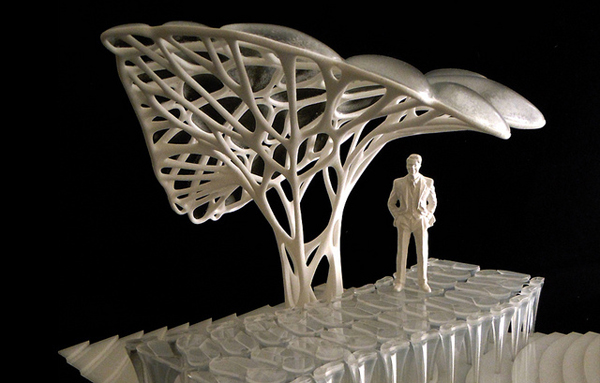
London-based design studio Minimaforms (brothers Stephen and Theodore Spyropoulos) question how architecture can facilitate new forms of communication. Through experimental architecture, they explore these questions in hopes to open up a dialogue about social and material interaction. Check out more pictures in the rest of the post.
Through an invitation from world renowned performance artist Stelarc, Minimaforms was asked to develop a gateway structure for Brunel University. The Gateway proposal conceived a threshold space suspended above an existing reflection pool as an exterior room and sanctuary. This structure is an open-cell system that operates as a perceptual framing device.

Deployed through an open-cell network are a series of operable convex and concave lenses, amplifying and collapsing the experiential relationships between users and their context. Developed through a parametrically controlled cellular deployment system, these lenses are distributed with both optical and structural parameters at play. The underbellies of these lenses extend as part of a three-dimensional fibre-field in which structural fibres and optic hairs are set out. The access plane hovering over the water surface of the reflection pool is constructed as a series of walkable lily pads that enable users to experience a complete sensorial displacement as one moves through this architecture of interface.

If you are interested in the work of Minimaforms also check out their Enabling Exposition website from last february at the AA, and the related book as well (which will probably cost you your left kidney). Great work, we will be posting more on them soon.


featured on Evolo
